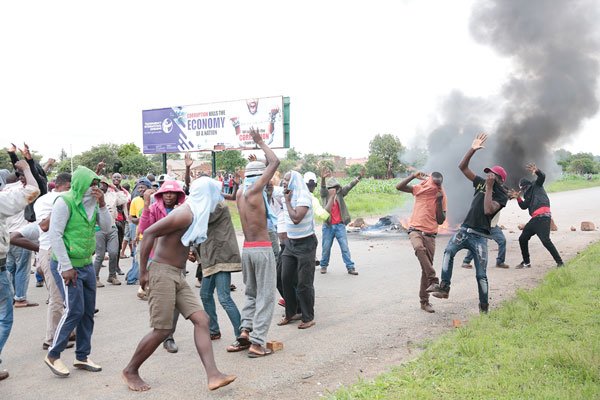Zimbabweans had been hoping for a fresh start when Robert Mugabe’s 38-year rule came to an end in November 2017.
But 14 months on, a brutal crackdown on fuel protests, which has left 17 people dead, has the country on edge and is likely to make existing food and health problems even worse.
The southern African country already faces a range of humanitarian concerns, with the United Nations and international aid groups filling gaps in food security, health and HIV care, water and sanitation, and social protection for vulnerable civilians.
Ongoing outbreaks of cholera and typhoid fever have killed more than 80 people since September, and some 2,4 million Zimbabweans, more than a quarter of the rural population, require food assistance this January-March lean season.
The new unrest, coupled with growing economic and political uncertainty under the government of President Emmerson Mnangagwa, is raising fears that the humanitarian situation may deteriorate further, threatening the health and livelihoods of millions of people and leading more Zimbabweans to flee to neighbouring countries.

What are the underlying economic issues?
Zimbabwe, which is under international sanctions, has battled two decades of unemployment, rising costs, a currency crisis, and nearly collapsed public services.
Inflation rates have surged, and about 80% of those with work are employed in an informal sector marked by poor and unpredictable working conditions.
The country abandoned its national currency in 2009 in favour of a multi-currency system, and has since suffered from a decade-long currency crisis.
This has led to instability in the price of goods and services — an instability compounded by the new unrest.
“The current problems in Zimbabwe are both political and economic,” Michael Tichareva, an independent financial expert based between Harare and Johannesburg, said.
He attributed the roots of the current crisis to a combination of corruption and gross mismanagement of public institutions by the long-ruling Zanu PF party.
“The political problems are actually stronger than the economic problems,” he said.
“Once the major political parties have a common purpose of developing Zimbabwe, and engage in a nation-building dialogue in order to bring unity, then the economic problems will most likely disappear.”
Why are there food and fuel shortages?
The country’s agro-based economy is crippled — largely due to droughts, poorly integrated climate risk management policies, and a lack of State support for small-scale farmers who grow most of the country’s food.
Famine Early Warning Systems Network, a United States-funded food security and malnutrition watchdog, said economic challenges and below-average rainfall this season would directly affect livelihoods and food security in large parts of the country — mostly for poor households, but also for some who are better off.
Shortages of basic food commodities such as cooking oil, sugar, flour, and bread have become a new normal.
Zimbabwe has to import nearly all its fuel. Stocks are heavily dependent on foreign currency exchange, and even when foreign currency is released it can take a long time to get fuel from depots out to affected areas.
Severe fuel shortages have plagued the country for the last two months.
A week after the protests, people could only get petrol or diesel if they waited in kilometres-long queues or if they had friends with connections.
Supermarkets also struggled to stock their shelves, and medicine was scarce.
The shortage of goods and fuel has sent prices skyrocketing.
A loaf of bread, which cost between 70 cents and $1 (or Zimbabwean bond note) in December is now $2,50 in the shops and $5 on the streets, following the protests.
Fresh milk, which was $1,20 in December, is now $4 per litre; maize meal that was $4,50 is now $8,20 per 10kg bag; and cooking oil that was $3,20 is now $9 for two litres.






